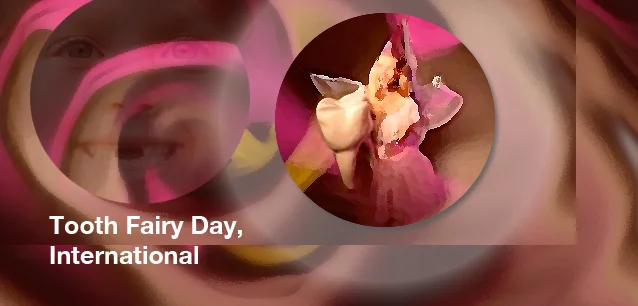 AD
AD
Today is: November 05
Scroll to explore events active on this date.
LEEP INK FEATURES

August? Absolutely!
In August, we live through the Dog Days of Summer. It's hot and often humid, and those who can leave for better climates do. Down south, winter is in full force. August is also known as "the ...

In The Heat of July: July 2025 Events
Is it hot enough (or cold enough if you're below the equator) for you yet? There is actually a day for that! Like every month, I pick a diverse collection of events you may or may not know about. This ...

May Blooms: Events in May 2025
Along with October, May is one of the most densely packed months of the year. It's before the summer humidity and the last whole month of the school year. The weather is warming in t...
About International Tooth Fairy Day
Health
Ends: Feb 28, 2023
DESCRIPTION:
The first known accounts of the idea of a Tooth Fairy originated in Arabia in the 1300s. To this day, in Islamic countries, parents continue to toss lost teeth in the air, a practice dating well before the advent of Islam.
However, the tradition of paying children for teeth (or rewarding children for such) is seen in the Viking culture as early as the 7th Century.
During the profoundly superstitious Middle Ages, several myths surrounded the loss of teeth. At this time, children began leaving them under their pillows for a prize, and parents left a trail of fairy dust for the children to find in the morning.
The Tooth Fairy is genuinely an international myth that borrows from traditions worldwide. No single culture is responsible for the myth; it grew with the global trade routes.
VIDEOS
SUPPORTING DOCUMENTS
Currently, this event does not have supporting documents.
ADDITIONAL IMAGES
Currently, this event does not have supporting images.
Where would you like to go now?
 AD
AD


/footer-logo.svg)
